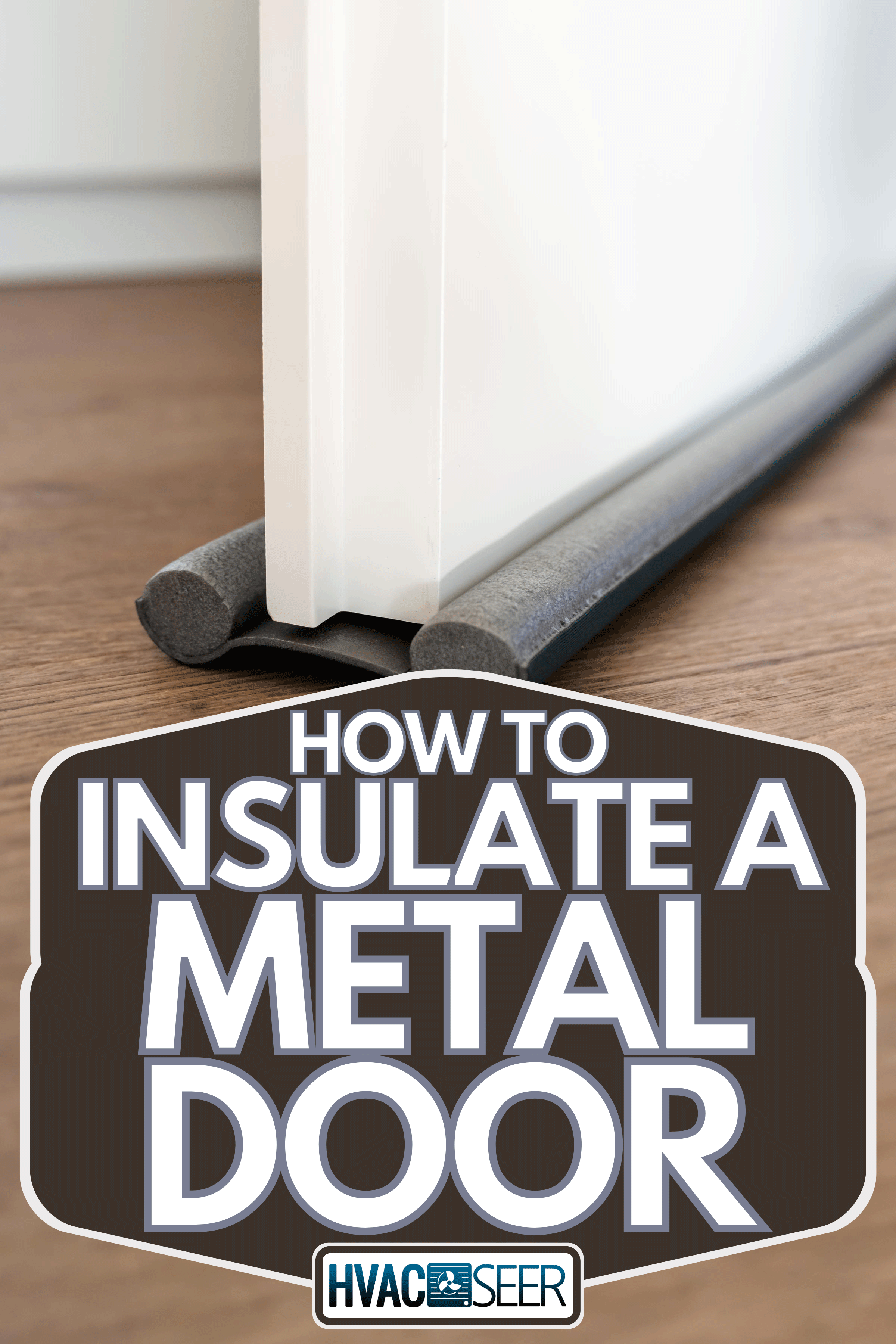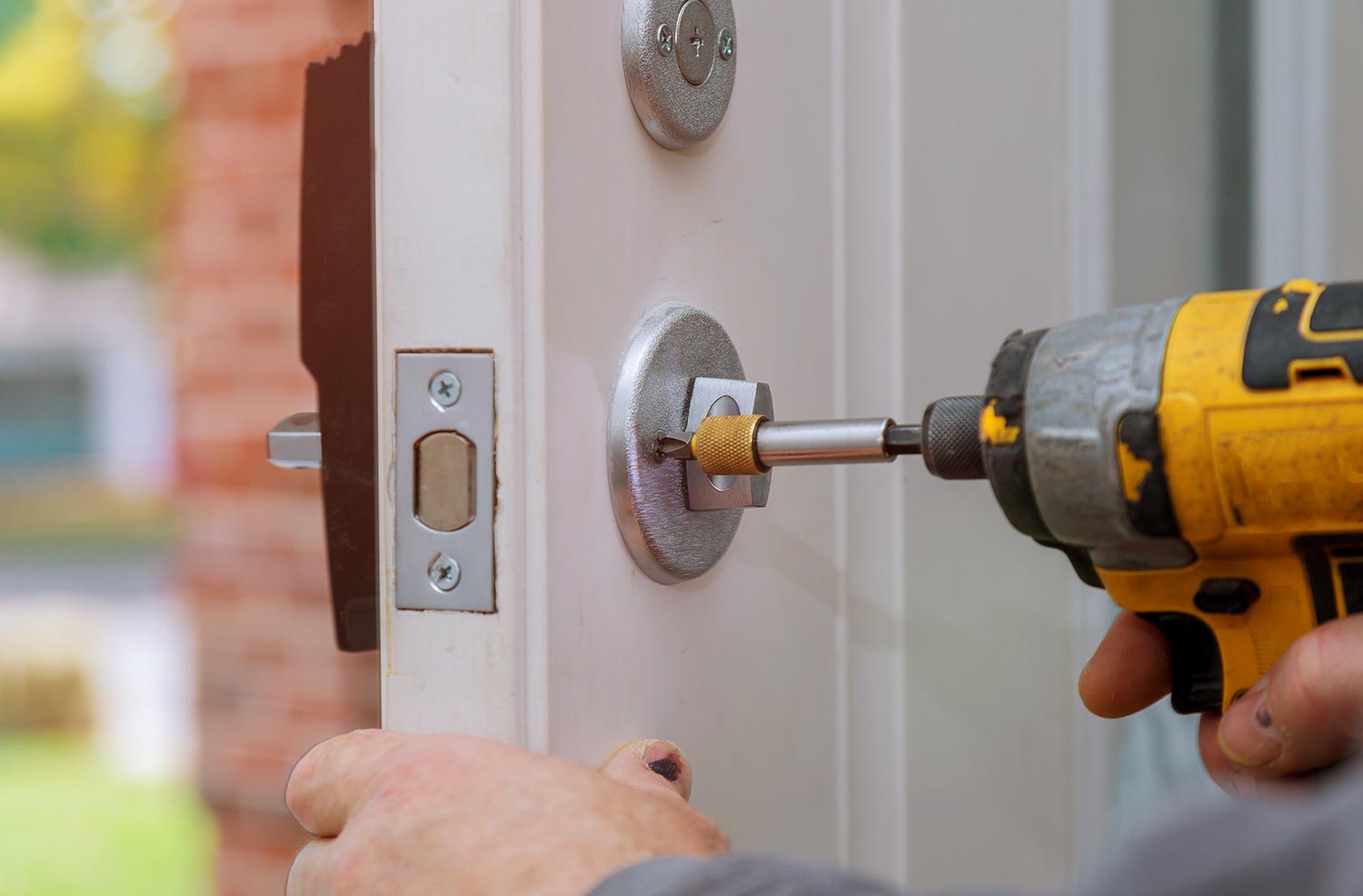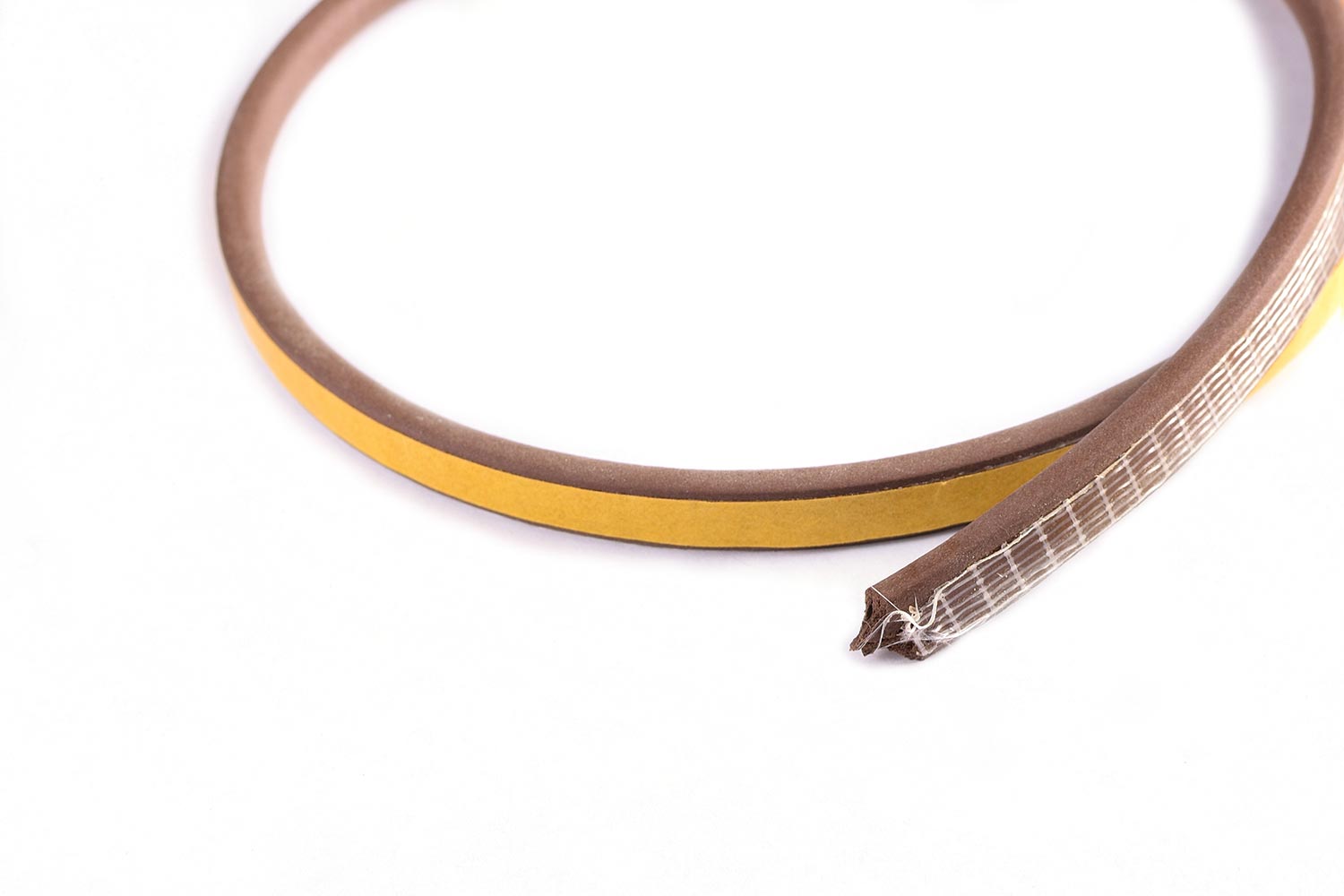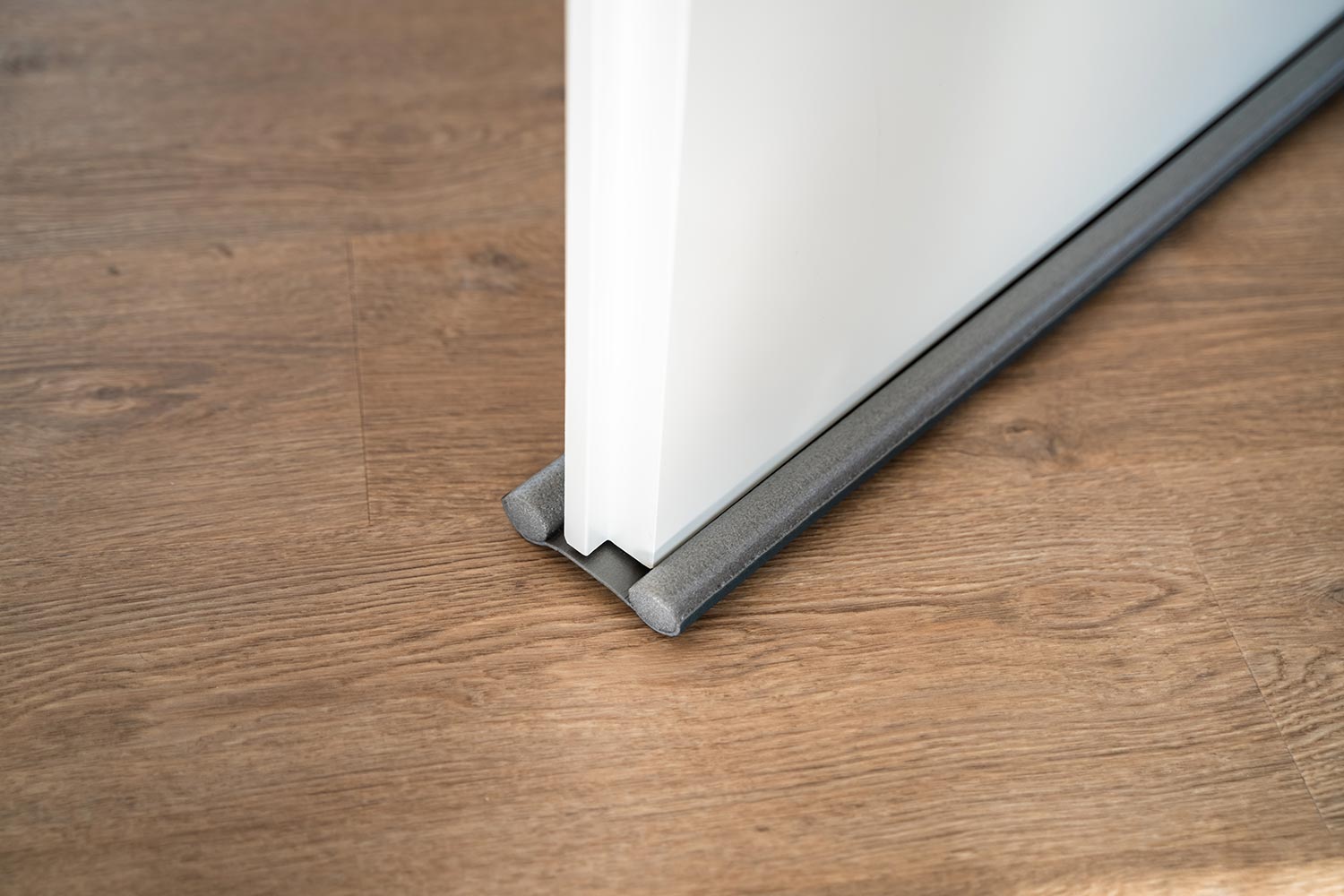When one installs a metal door on the entrance of their business or home, they may forget to consider one crucial element—insulation. Metal is a conductor, and these doors can be naturally prone to transferring heat energy. So how do you insulate a metal door? We've done the research to give you an answer.
You can add insulation to your metal doors by installing a deadbolt, adding weatherstripping, installing a draft guard, and adding an insulating layer on the inside of the door.
Now you have some basic ideas of how you can insulate your metal door this winter. However, you might like some more detailed suggestions, or maybe you'd like to learn more about the types of metal doors so that you can determine whether this will become an issue with yours. Keep reading to learn more.

Ideas To Insulate Metal Door
During the winter or summer, you may notice that the inside of your metal door becomes quite cold or hot, especially if it is of a hollow or older design. This indicates that the door is allowing heat or cold energy to pass through.
On the other hand, you may notice that quite a bit of air is escaping into or out of the home around the edges of the door. This could be from the door or home having aged and shifted and no longer having a snug fit against the door frame.
Fortunately, many solutions for insulating a metal door are the same or similar to that of any other type of door. Let's dive in and take a look at a few tried and true suggestions.
Install A Deadbolt

This may have never crossed your mind, but a deadbolt is actually very helpful in ensuring that your door is sealed correctly. When a deadbolt is locked, it holds the door steady in its correct position.
A deadbolt may already be installed on your door, especially if you reside or work in a new building. In other cases, this may not be true, especially in older buildings. A deadbolt was not always seen as an essential security feature, and your doors may very likely be without this lock if it's an older home.
Check out this commercial-grade deadbolt on Amazon.
If you are without a deadbolt on your metal door, consider installing one to ensure a tight fit and decrease air leakage.
Add Weatherstripping

Weatherstripping is another effective way to prevent air from leaking around the edges of metal doors. Again, this may be an element that is already added to a door, especially if the door is of superior quality, but in many cases, this is not the case.
Weatherstripping can be purchased in a variety of materials. They are produced from vinyl, copper, aluminum, steel, felt, and foam.
Take a look at this weatherstripping seal on Amazon.
Methods of installation vary as well. Foam materials may be taped. Steel and aluminum products may interlock. Many different material types are created as a "V-strip" which fits around the edge of the door and is nailed.
With all of these options available, you can easily find weatherstripping that fits your abilities and needs.
Install A Draft Guard

The draft guard (also known as the draft stopper) is another product meant to prevent cool or hot air from leaking. This type of insulation material creates a seal between the bottom edge of the door and the threshold.
Once again, this could very likely be an issue for you if you have an older home that has shifted and settled, causing the door to no longer "fit" against the frame and floor.
Draft guards come in metal, foam, and upholstery fabric. As with weatherstripping, methods of installation and use vary.
Check out this adhesive draft guard on Amazon.
You can purchase products that are magnetic or adhesive. You can also find ones that simply slide underneath the door or lay against it when shut. All of these are very easy to use.
Add An Insulating Layer
Now that we've covered all of the ways to prevent and decrease air leaks, we should talk about preventing heat and cold energy from transferring through a metal door. This is a major problem with metal doors, especially those that are older or those that have an inferior core.
It's easy to tell if this is the case with your door. When the temperature is high or low outdoors, place a hand on your metal door. Has it turned especially hot or cold? This means that it is not well insulated.
So what can you do about this? The only solution short of replacing the door is to add an insulating layer to the inside of the door.
This can be done in a couple of creative ways. One of these is to add a foam insulation sheet. Some of these sheets already have an adhesive backing, or you can mount the sheet using strong double-sided tape.
Take a look at these foam insulation sheets on Amazon.
Another idea to consider is to hang a thermal blanket or curtain panel over the door. Some have done this using magnetic curtain rods. However, a strong adhesive could also be used.
Check out these magnetic curtain rods on Amazon.
Can You Insulate A Hollow Metal Door?
You can add insulation to a hollow metal door using the methods described above. However, you cannot insulate a hollow metal door internally.
This is because hollow metal doors are not actually hollow. This simply means that the door's metal material is a shell without a solid core. However, the core is filled with a material of some kind.
Energy Efficient Doors
After reading through the above methods, you may have decided that you would like to replace your door rather than attempt to insulate the existing one. So, you may have some questions about doors and their energy efficiency. Let's talk about the most common types of exterior doors.
Steel
Today's exterior steel doors can have superior energy efficiency, especially if one pays attention to the core type and purchases accordingly.
Ready-made steel doors may be outfitted with four types of cores. These are honeycomb, polystyrene, polyurethane, and steel stiffened. These core types are certainly not created equal where insulation is concerned.
Inexpensive exterior steel doors are often filled with honeycomb cardboard. These doors can often be found on mobile homes, apartments, and other rentals. They are the least costly, but they are not well insulated. The "R-value," the measurement of ability to prevent heat transfer, is low at 1.68.
A type of core that is decidedly a better insulator than honeycomb cardboard but is still not the highest is steel stiffened. This type of core holds an R-value of 2.01. This type of steel door is typically not used on residences, but it may be used on a business.
A high-efficiency solution is a polystyrene foam core. This type holds an R-value of 2.64. Still higher is polyurethane. This type of core is also of foam material. It is very dense, with an R-value of 2.81.
Do Steel Doors Insulate?
Steel, itself, is a conductor of energy. It will not work to insulate a home whatsoever. However, with the right type of core inside the steel door, it can be an aid to making a home more comfortable and cost effective by preventing the transfer of heat.
Iron
Another very common type of metal exterior door is the iron door, often referred to as wrought iron. These are often used as entry doors, as they can be styled into beautiful, ornate designs.
Are Iron Doors Energy Efficient?
Yes, iron doors can be very energy efficient. Most are created with a polyurethane or polystyrene foam core. Both of these have high R-values, so they will work to prevent heat energy from entering or exiting the building.
To be sure, you should check that the iron door you are considering has one of these types of cores.
Many iron doors are also equipped with glass windows. Of course, you should be sure that these windows are double paned to prevent energy loss.
Do Iron Doors Get Hot?

The exterior side of an iron door may very likely get hot if in direct sunlight for a period of time. This could be an issue, especially if there are little ones who will be entering and exiting from this door and could be burned.
The interior side of an iron door should only become slightly warm in this situation because it is equipped with the thermal break of its foam core.
In Closing
Metal doors can be tricky when it comes to insulation. Those with inefficient core types such as honeycomb cardboard will not do much to prevent the transfer of heat, which will, in turn, cause your home to lose warmth in the winter or get too warm in the summer.
We gave you some ideas on how to insulate your metal door, such as installing a deadbolt, adding weatherstripping, installing a draft guard, and adding a thermal layer to the inside of the door.
We also went into detail on steel and iron doors and their energy efficiency. We hope this post will help you stay comfortable in your home or workplace!
Want to learn more about insulating structures in your home? Visit these related posts:





